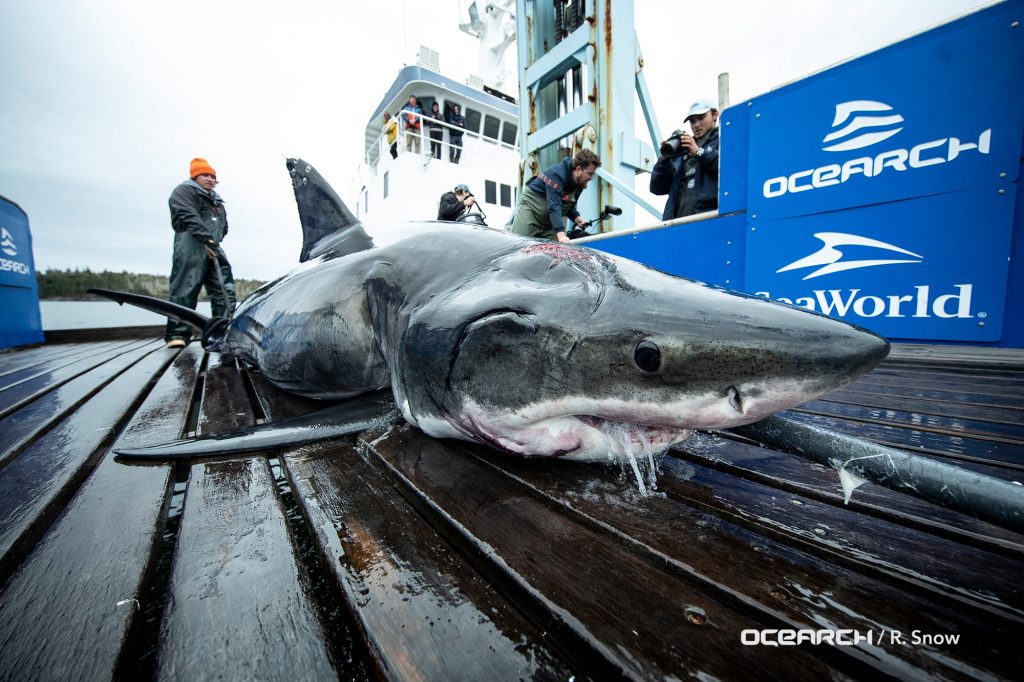A marine research non-profit group recently posted a snap of a great white shark they were tracking with two giant bite marks on its head.
Now they wonder what the hell made those huge marks.

One of the wounds was relatively fresh, while the other was almost healed, suggesting the two injuries occurred on separate occasions. Despite his battle scars, he appeared to be in remarkably good shape.
The chomped shark was a 3.8-meter (12 foot 9 inches) adult male named “Vimy” recently studied off the east coast of the US by OCEARCH.
What is unique about Vimy was both the apparent freshness of the wound and just how clear the top and bottom marks lined up to show the outline of the jaws from his opponent.
This is the second time this year that a injured shark was pulled out of the sea. A few months ago, a fisherman pulled out the severed head of a large mako shark from the waters of New South Wales, Australia and it is still unknown what caused the decapitation.
What Scientists Suspect
Judging by the size and shape of the bites, scientists suspect it was the result of a brawl with other large(r) sharks, although it’s unclear whether it was a different species or a fellow male great white fighting for a mate.
A week before tagging Vimy, OCEARCH encountered a white shark that was about 17-feet long (5.1 meters). So, there are sharks of the coast of Nova Scotia that are bigger than Vimy.
In the next video, the scientists of OceArch tag Vimy the great white shark:
Great White Sharks
Great white sharks (Carcharodon carcharias) can be found in many waters across the globe, with notable concentrations in the US (northeast coast and California), South Africa, Japan, Chile, and the Meditteranean.
The species are great travelers. As you can see from the live map of his whereabouts here, Vimy was first spotted earlier this month near Nova Scotia before heading towards the equator. By October 20, Vimy was spotted deep in the Atlantic almost 1,000 kilometers (621 miles) away southwards from his first sighting.
White sharks are big powerful predators and when they come in contact with each other, it is often a violent encounter. Scientists and fishermen recall seing sharks having all kinds of wounds and scars like missing fins and marks around their gill areas.
White sharks live in a really tough and wild world. [Facebook, IFLScience]












